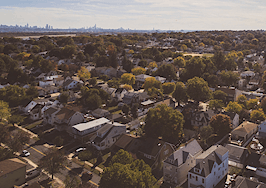This post is the second in a series of Inman data visualizations exploring the U.S. housing market using the government’s American Community Survey. Check out the first article here.
In our last interactive article, we mapped housing costs across the country in simple terms.
The previous map looked at monthly housing costs beyond the basic mortgage payment, as recorded in the government’s annual American Community Survey. Property taxes, insurance and utilities were all included.
Today, we’re interested in how an area’s income enters the picture. It’s well known that in most areas with expensive housing, employers offer higher salaries. This does a lot to close the gap we observe in urban-rural housing expenses.
Cities and suburbs are costlier to live in than rural areas, but many are no less affordable if we account for differences in household income.
But even after accounting for income, we still see wide gaps in housing costs from state to state — check out these differences in the interactive map above.
Housing in states like Indiana and West Virginia has been relatively affordable for the median resident with a mortgage. Most homeowners in these states spend roughly 18 percent of their income or less on housing-related costs.
But on the more expensive end of the spectrum, states such as Hawaii, California and New Jersey for years have seen their median homeowner costs rest near 25 percent of household income.
These numbers might not appear that unmanageable at first glance. But keep in mind the median just splits each state’s mortgage holders into two groups: the half that spent a greater share of their incomes than we’re seeing here, and the half that spent less. Many households, inevitably, are spending more than the median.
As a rule of thumb, the federal government considers a household that spends 30 percent of its income on housing costs to be “cost-burdened.”
In some states, the median homeowner is already nearing that mark, despite some of those states having relatively high incomes.
Check out the complete list of states below, ordered from most cost-burdened to least by the median homeowner with a mortgage.
A few caveats to keep in mind when reading this data:
First, this survey data is based on a random sample of the population, which means it comes with a margin of error. In this case, however, that error margin is thought to be small. Most state estimates in the map and table above should be accurate within a tenth of a percentage point or two, and none should be off by more than 0.4 percentage points.
Secondly, these results reflect what respondents were making and paying for housing costs in 2019, when the survey was conducted. This means it doesn’t reflect anything that happened during the pandemic. The census bureau is expected to release the first round of pandemic-era survey data later this year, which should come with a host of interesting observations from 2020.
Finally, the typical respondent may have locked in their mortgage payment years or even decades before they reported their housing costs in this survey. This means their circumstances won’t be reflective of the costs faced by a person who bought more recently at the record market prices we’re seeing today.







